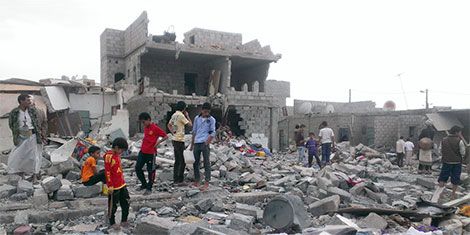
This article was originally published by Political Violence @ a Glance on 9 February 2018.
As with most civil wars, the war in Yemen is marked by the influence of outside actors. It began in September 2014, when the Iranian-backed Houthis took over the capital Sana’a, and it might well have ended six months later, when the president fled a Houthi advance on Aden. Instead, Saudi Arabia led a coalition of ten Arab countries—supported by the United States—in an air and ground campaign against the Houthis. Since then, the war has ground on, with a new dimension of fighting opening recently between southern secessionist militias—many of which receive support from the United Arab Emirates—and government forces backed by the Saudi coalition. Since taking office, the Trump administration has increased American air strikes in Yemen six fold.
